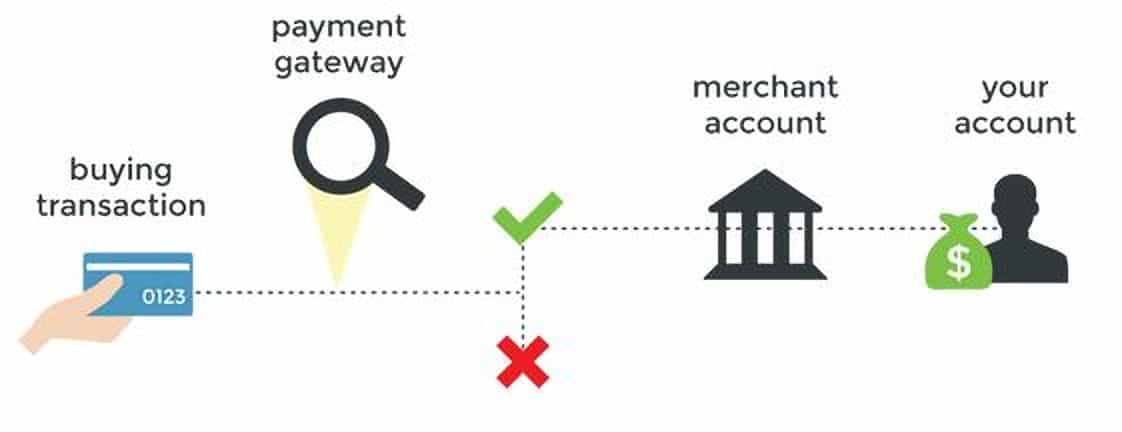Choosing the right payment gateway for your ecommerce business is as important as the design itself.
Customers expect a convenient experience, so having a payment gateway that frustrates them during the checkout process can result in a high number of abandoned carts.
Not quite sure how to choose the right payment gateway? To do so, you’ll need to understand how they work.
What is a payment gateway?
As the diagram below shows, payment gateways process credit or debit card payments. They’re what connect and authorize payments between the merchant and customer’s accounts. Some of the most popular payment gateways include Braintree, PayPal, PayU, Stripe, Skrill, WooCommerce, and Amazon Payments.
Source: Pinterest
The process works with the customer providing their card details. A secure connection sends this information to the processing bank. Using Visa or MasterCard’s payment network, the issuer approves or declines the transaction. If the transaction is successful, the payment gateway deposits the funds into the merchant account. At the same time, the money, including a transaction fee, leaves the customer’s account.
The best payment gateways
Choosing the best payment gateway depends on your ecommerce business model. You can choose an integrated or hosted payment gateway. There are also classic and modern gateways available. You’ll need to consider factors such as security, customer experience, and data ownership before making your final choice.
Hosted payment gateways
This includes payment gateways like PayPal. The benefits of a hosted gateway are the processing company remains responsible for all security and compliance requirements. A hosted payment gateway doesn’t integrate into your site, which means you can’t control the customer’s experience. Once a customer wants to make a payment, they’ll complete the process on the hosted payment gateway’s site.
PayPal’s global payment volume for Q3 in 2019 totaled $173.67 billion.
The drawback of these types of gateways is that it can reduce your conversion rates. If a customer isn’t familiar with the process, they could abandon the purchase. If you want to use a hosted payment gateway, ensure you find a service your customers know how to use.
Integrated payment gateways
These kinds of gateways don’t require the customer to leave your site to complete the payment. Using an API, you integrate the payment gateway directly into your ecommerce website. You’ll need to check that the ecommerce platform supports your gateway right off the bat because, if it doesn’t, you’ll require some technical skills to ensure it works correctly.
An example of an integrated payment gateway is WooCommerce. You can add it to a WordPress site as a plugin. WooCommerce charges a transaction fee on every purchase. For smaller businesses, this may not be a problem at first. For companies that process more transactions every month, another solution may be better.
Another example of an integrated payment gateway is Stripe. It accepts more types of credit cards, integrates into your site, and costs the same as PayPal. The best way to decide on a payment gateway is whether it’ll grow your business and if you can integrate it with your site.
How to measure the success of your payment gateway
If you see shopping carts regularly abandoned by your customers, it could indicate issues with your payment gateway. Using Campaign Monitor will enable you to send out an email to request details from your customers’ cart abandonment. If customers express frustration over completing a purchase, you can start looking for a new solution.
Does it really matter?
Choosing the wrong payment gateway can have a big impact on your ecommerce business. Finalizing the order and making a payment requires your customers to trust your company. If they don’t trust your payment gateway, they’ll probably find somewhere else to do their online shopping.
What now?
With Campaign Monitor’s CM Commerce solutions, you can now integrate your ecommerce shop with your marketing campaigns. Choosing the right payment gateway is just the first step in running a successful ecommerce business.
Campaign Monitor can help you engage with your customers. Ready for the next step? Check out this guide on integrating your email campaigns with other online apps.
